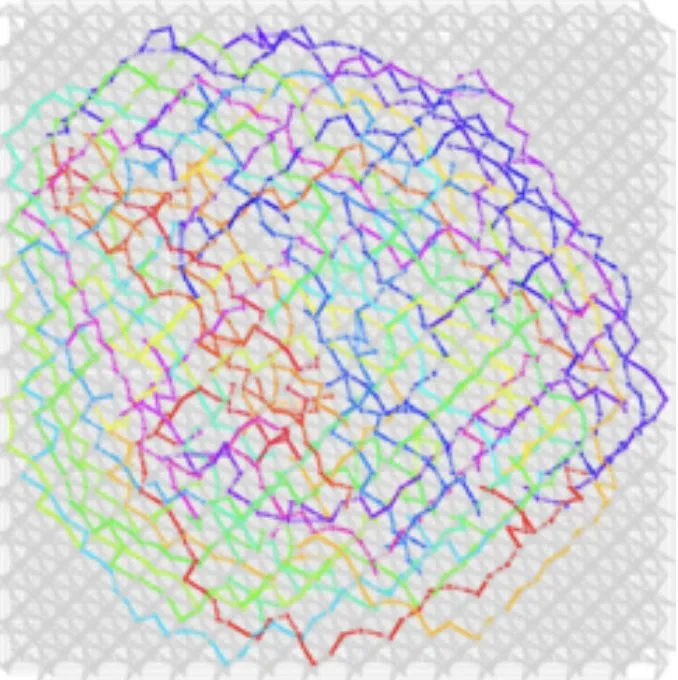Quantum annealing is a quantum algorithm used to solve complex optimization problems. It involves transitioning a system from an initial Hamiltonian to a problem Hamiltonian, with the qubit states read out as classical bits at the end of the anneal. Minor embedding is a crucial part of this process, allowing logical problems to be programmed onto the hardware. A new method, the 4Clique network minor embedding, has been developed to optimize problems onto sparse quantum annealing hardware graphs. This method, researched by Elijah Pelofske from the Los Alamos National Laboratory, increases chain integrity and reduces chain breaks, enhancing the potential of quantum annealing.
What is Quantum Annealing and How Does it Work?
Quantum annealing is a quantum algorithm designed to solve combinatorial optimization problems. This process of computation works by starting the system in the easy-to-prepare ground state of a Hamiltonian and then slowly transitioning the system into a second Hamiltonian. The second Hamiltonian corresponds to a problem of which we do not know the ground state because it is difficult to compute. In the transverse-field Ising model version of quantum annealing, the system is put into an initial uniform superposition that is the ground state of the Hamiltonian.
The user-programmed problem Hamiltonian is then turned on over the course of the anneal. At the start, the system is prepared in the ground state of the initial Hamiltonian and therefore the qubits are put into an initial superposition. At the end of the anneal, the problem Hamiltonian is dominant. The annealing time over which these schedules are applied can be varied and in the case of physically implemented quantum annealers, the possible annealing time is constrained by the hardware. At the end of the anneal, the qubit states are read out as classical bits which correspond to the variable states. Those samples are intended to be low-energy solutions to the problem Ising Hamiltonian that the user has specified.
What is the Role of Minor Embedding in Quantum Annealing?
Minor embedding is the only mechanism that allows logical problems with structure that does not directly match the underlying hardware graph to be programmed onto the hardware. In minor embedding for quantum annealing, each variable on the logical problem graph can be represented by a collection of physical qubits which are linked together ferromagnetically. The ferromagnetic coupling attempts to ensure that the variables representing each logical qubit are in agreement as to what the logical variable state is; there is an energy penalty for a qubit not having the same spin state as its neighbors. The standard minor embedding that is used creates a linear path of physically linked qubits, typically a linear nearest neighbors (LNN) graph, which form this ferromagnetically bound logical variable. These linear path groups of qubits are typically referred to as chains.
What is the 4Clique Network Minor Embedding?
The 4Clique network minor embedding is a method for minor embedding optimization problems onto sparse quantum annealing hardware graphs. This method is in contrast to the standard minor embedding technique of using a path of linearly connected qubits in order to represent a logical variable state. The 4Clique minor embedding is possible on Pegasus graph connectivity, which is the native hardware graph for some of the current D-Wave quantum annealers. The Pegasus hardware graph contains many cliques of size 4, making it possible to form a graph composed entirely of paths of connected 4-cliques on which a problem can be minor-embedded.
What are the Advantages of the 4Clique Network Minor Embedding?
The 4Clique chains come at the cost of additional qubit usage on the hardware graph, but they allow for stronger coupling within each chain, thereby increasing chain integrity, reducing chain breaks, and allow for greater usage of the available energy scale for programming logical problem coefficients on current quantum annealers. The 4Clique minor embedding technique is compared with the standard linear path minor embedding with experiments on two D-Wave quantum annealing processors with Pegasus hardware graphs. The experiments show proof-of-concept where the 4Clique minor embeddings can use weak chain strengths while successfully carrying out the computation of minimizing random all-to-all spin glass problem instances.
Who is Behind this Research?
The research was conducted by Elijah Pelofske from the Los Alamos National Laboratory CCS3 Information Sciences. The study was received on 22 September 2023, revised on 18 January 2024, accepted on 13 February 2024, and published on 13 March 2024. The research was published by the American Physical Society under the terms of the Creative Commons Attribution 4.0 International license.
What is the Future of Quantum Annealing?
Quantum annealing has experimentally been shown to be competitive for good heuristic sampling of combinatorial optimization problems and simulation of frustrated magnetic systems. Although the size, i.e., the number of qubits, has been increasing as hardware development improves, the hardware of these quantum annealers is relatively sparsely connected, thus limiting what problem connectivity graphs can be sampled on these devices. However, with the development of new techniques like the 4Clique network minor embedding, the potential of quantum annealing to solve complex optimization problems is expected to increase.
Publication details: “4-Clique network minor embedding for quantum annealers”
Publication Date: 2024-03-13
Authors: Elijah Pelofske
Source: Physical review applied
DOI: https://doi.org/10.1103/physrevapplied.21.034023

